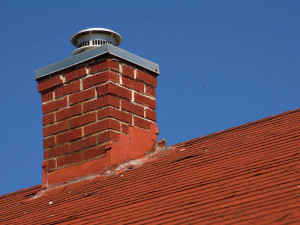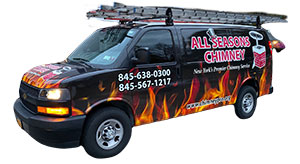 Knowing the names and functions of the different components of your chimney system can be very helpful when a problem arises. Our staff at All Seasons Chimney always appreciates having as many details as possible when you call us to tell us about a chimney problem, and sometimes we can even troubleshoot the problem over the phone if you are able to tell us exactly which part is malfunctioning. We do understand, however, if you are unfamiliar with the anatomy of your chimney, which is why we would like to share with you more information about the different components of your chimney.
Knowing the names and functions of the different components of your chimney system can be very helpful when a problem arises. Our staff at All Seasons Chimney always appreciates having as many details as possible when you call us to tell us about a chimney problem, and sometimes we can even troubleshoot the problem over the phone if you are able to tell us exactly which part is malfunctioning. We do understand, however, if you are unfamiliar with the anatomy of your chimney, which is why we would like to share with you more information about the different components of your chimney.
Do you have a masonry or a prefabricated (prefab) chimney?
If you do not know the answer to this question, you can find out by looking at the firebox that surrounds your fireplace. A masonry chimney will have a firebox constructed from typically yellowish firebrick. A prefab chimney has a firebox made from cast refractory panels, according to the Chimney Safety Institute of America (CSIA).
Tell me about the anatomy of a masonry chimney.
At the top of a masonry chimney, you will find a chimney crown, which is made of mortar and keeps water out of the chimney. Typically, the flues in masonry chimney are lined with clay tiles, but these liners could also be stainless steel. Right above the firebox is the smoke chamber and smoke shelf. This is where the smoke and other byproducts of combustion begin to exit out of the chimney. Directly below the smoke shelf, you will find the damper, which is generally constructed from metal and should have a gasket around the edges to seal off the chimney when the damper is closed. Underneath the damper is the firebox, which takes the brunt of the heat from the fire. You should check out the condition of the mortar joints of the firebox every so often to be sure there are no cracks that could lead to carbon monoxide leaks. Between the firebox and the foundation of your home is the ash dump, which can be helpful when cleaning out the ashes from the firebox. However, you should also clean out the ash dump and not let it get to the point of overflowing.
How is the anatomy of a prefab chimney different?
The anatomy of a prefab chimney is much more simple than that of a masonry chimney. You basically have a chimney cap at the top, flashing around the chimney where it meets the roof, a fire-stop at the ceiling for clearance purposes, the chimney, and the firebox. Unlike a masonry chimney that is built brick by brick, a prefab chimney and fireplace are a complete system and are manufactured to work efficiently and safely with each other. You should never use a different type of fireplace with a prefab chimney, and it is equally important that a prefab chimney be installed by a certified chimney professional because of the standards and clearances involved with these types of chimneys. You should also always follow the instructions given in the owner’s manual to your prefab chimney and fireplace as there are certain safety precautions to consider.
Have questions about the anatomy of your chimney? Contact us at All Seasons Chimney to learn more about the different parts of your chimney system.


 hen you are looking to hire a chimney professional to work on your fireplace and chimney system, it can be easy to be overwhelmed by the different options. You want to find a reputable and trusted chimney company, but how can you be sure of this in advance? The most important credential you should look for this
hen you are looking to hire a chimney professional to work on your fireplace and chimney system, it can be easy to be overwhelmed by the different options. You want to find a reputable and trusted chimney company, but how can you be sure of this in advance? The most important credential you should look for this